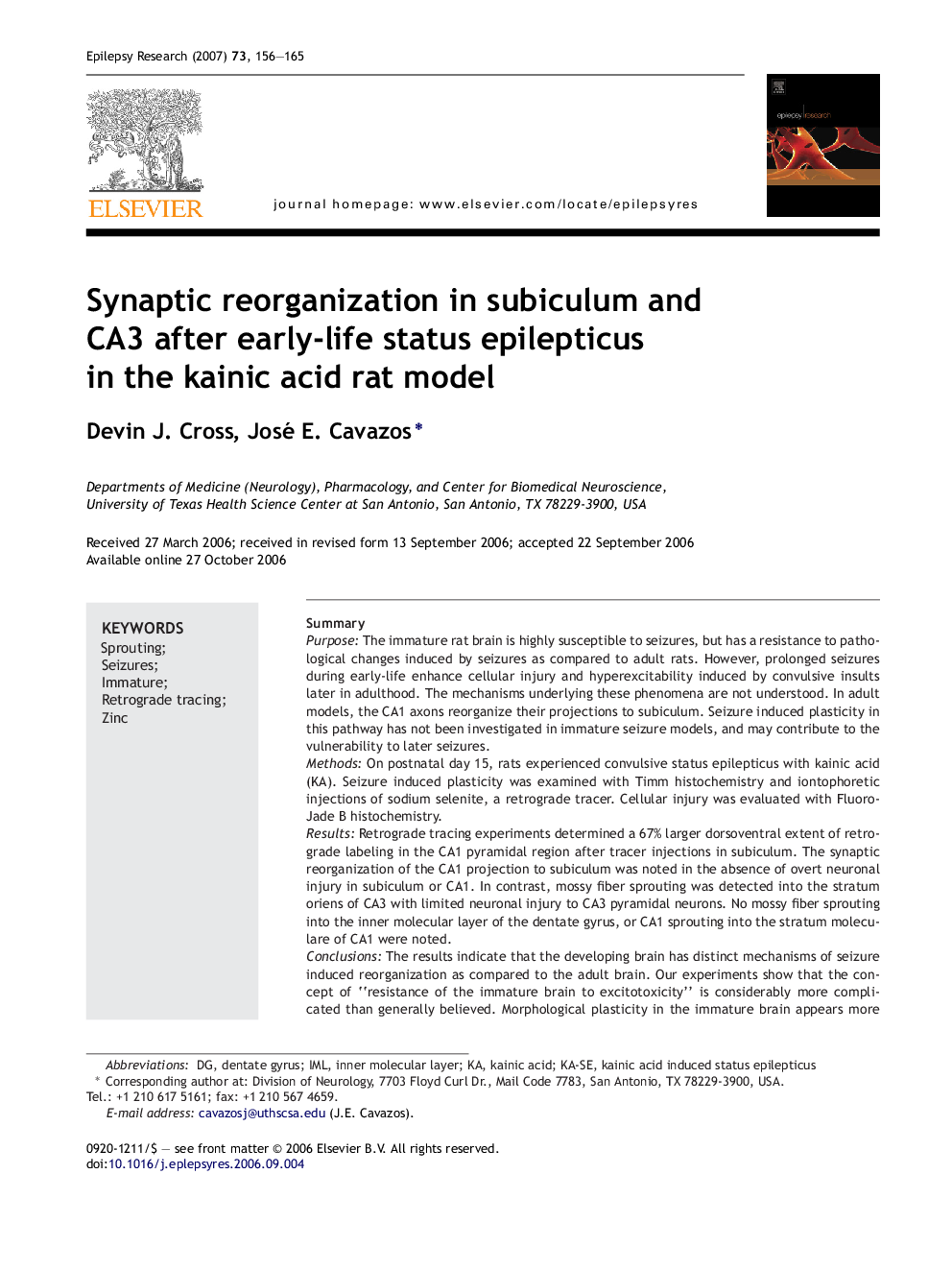| کد مقاله | کد نشریه | سال انتشار | مقاله انگلیسی | نسخه تمام متن |
|---|---|---|---|---|
| 3053194 | 1186150 | 2007 | 10 صفحه PDF | دانلود رایگان |

SummaryPurposeThe immature rat brain is highly susceptible to seizures, but has a resistance to pathological changes induced by seizures as compared to adult rats. However, prolonged seizures during early-life enhance cellular injury and hyperexcitability induced by convulsive insults later in adulthood. The mechanisms underlying these phenomena are not understood. In adult models, the CA1 axons reorganize their projections to subiculum. Seizure induced plasticity in this pathway has not been investigated in immature seizure models, and may contribute to the vulnerability to later seizures.MethodsOn postnatal day 15, rats experienced convulsive status epilepticus with kainic acid (KA). Seizure induced plasticity was examined with Timm histochemistry and iontophoretic injections of sodium selenite, a retrograde tracer. Cellular injury was evaluated with Fluoro-Jade B histochemistry.ResultsRetrograde tracing experiments determined a 67% larger dorsoventral extent of retrograde labeling in the CA1 pyramidal region after tracer injections in subiculum. The synaptic reorganization of the CA1 projection to subiculum was noted in the absence of overt neuronal injury in subiculum or CA1. In contrast, mossy fiber sprouting was detected into the stratum oriens of CA3 with limited neuronal injury to CA3 pyramidal neurons. No mossy fiber sprouting into the inner molecular layer of the dentate gyrus, or CA1 sprouting into the stratum moleculare of CA1 were noted.ConclusionsThe results indicate that the developing brain has distinct mechanisms of seizure induced reorganization as compared to the adult brain. Our experiments show that the concept of “resistance of the immature brain to excitotoxicity” is considerably more complicated than generally believed. Morphological plasticity in the immature brain appears more extensive in distal, but not proximal, projections of hippocampal pathways, and across hippocampal lamellae. The abnormal connectivity between hippocampal lamellae might play a role in the increased susceptibility to injury and hyperexcitability associated with later convulsive insults.
Journal: Epilepsy Research - Volume 73, Issue 2, February 2007, Pages 156–165